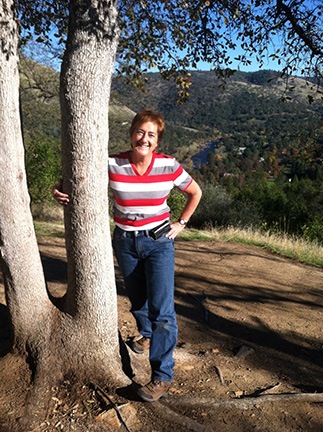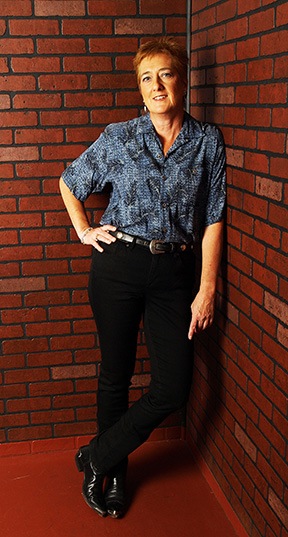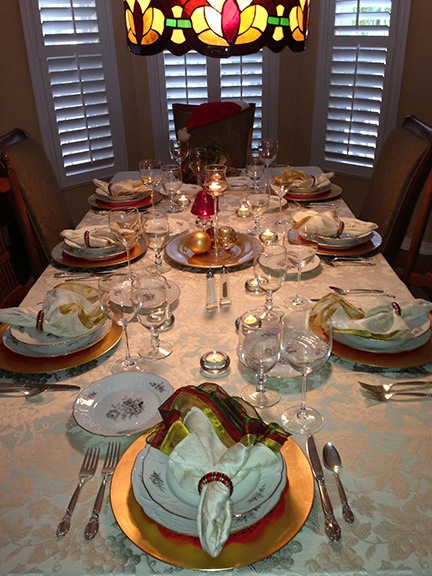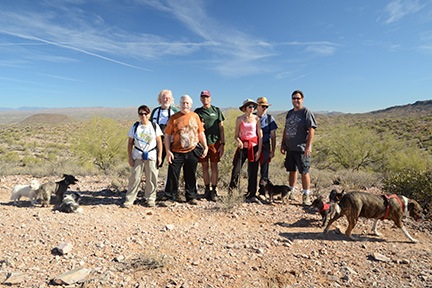A new wardrobe for a new me.
One of the good (and bad) things about losing a bunch of weight is the need to buy new clothes. Good because it’s always nice to have an excuse to buy new things. Bad because buying a whole new wardrobe can be costly.
As reported — or, rather, bragged about — elsewhere in this blog, I lost about 45 pounds this past summer. Although my clothes closet was full of clothes I’d worn in my thin days and many of them fit me, most of them did not. And my dresser drawers had only clothes that fit me before I lost all that weight.
Taking Inventory
It took a long time to go through all those clothes and I’m just about done. The news was not good.
My much-loved Henley t-shirts — the ones with the super-soft cotton — which I wore almost all the time, were now large enough to wear as nightshirts. They were a men’s size large and a handful of them have been shifted to my pajama drawer. The 3X t-shirts I had been wearing as nightshirts were tent-like and went to the thrift store.
My long-sleeved t-shirts, which had been snug, seemed big enough to put two of me in. The shoulder sleeve seams hung at least two inches below my shoulders. They’ll go to the thrift store.
I tried on at least 20 pairs of denim jeans that had been hanging in my closet for up to 15 years. I gave at least 15 pairs of them to the thrift store. Of the remaining pairs, some of them were so worn or torn that they’d need repairs before being put back into circulation.
The three suits I’d kept from my corporate days were too large. They went to the thrift store. The same goes for most of the dress slacks, although a nice pair of fully lined wool slacks now fit me again.
And when I finally tried on my cold-weather clothes a few weeks ago, I discovered that all of them were too big for me — some of them ridiculously large. That’s long-sleeved t-shirts, turtlenecks, mock turtlenecks, sweaters, sweatshirts, and jackets. I was even heart-broken to discover that even the black denim logo jacket I’d gotten from Lynda.com — the one with “Author” embroidered on it — was now too large to wear. It had been painfully snug when I wore it just last year.
There was some good news in the closet. My formal wear, including a long satin skirt and several sequin tops and dresses, mostly still fit. I had no need for such clothing in the later years of my marriage — after moving to Arizona we never went anywhere that required that level of dress — so I never bought anything it that during my fat days. Fortunately, I kept the thin clothes and hope to wear it in the future — maybe as soon as this New Year’s Eve.
The New Wardrobe

This photo, shot during my Thanksgiving trip to California, shows off one of the brightly colored t-shirts I picked up on a shopping spree in Vegas earlier that month. (I’ve also been traveling quite a bit lately.)
Over the past few months, I’ve been buying new clothes to fill in the gaps in my wardrobe. I detailed one shopping spree in this blog; there have been other smaller ones since then. On those trips, I bought the things I needed for warm weather: t-shirts, shorts, tank tops, skirts, and casual shoes (to replace the canvas Keds I’ve been wearing for years). A lot of what I bought is colorful — something I avoided in the past.
I also bought a lot of understuff: panties and bras. None of what I had in my underwear drawer fit properly anymore. I discovered Victoria’s Secret, had a bra fitting, and bought a few lacy bras that not only fit perfectly, but also helped counteract the affects of gravity that all women experience after a certain age. Of course, with all those lacy bras, I needed lacy panties to replace the practical but not very exciting cotton undies I’d been wearing for years. My soon-to-be ex-husband didn’t seem to care much about my lingerie — or sex, for that matter — in the last year or so of our marriage but I’m sure his replacement will. And I love looking and feeling sexy again.
I spent the Christmas holidays in St. Augustine, Florida, with my mom and stepdad. It wasn’t until I packed for the trip that I realized I had problems with my cold-weather wardrobe. So two days after Christmas, at the height of post-Christmas sales but before all the good merchandise had been bought up, I hit the outlet mall there.
 It was a real shop-till-you-drop experience. I bought 9 long-sleeved t-shirts, 2 short-sleeved t-shirts, 2 lace camisoles, 3 tank tops, 3 sweaters, 2 pairs of Levis blue jeans, and a belt. I also bought 2 pairs of shoes — one of which I put on in the store and threw away what I’d been wearing. The sales made all this possible. With sale prices and two coupons, I spent less than $350 and got quality merchandise from stores like Eddie Bauer, Bass Shoes, Levis, and Tommy Hilfiger.
It was a real shop-till-you-drop experience. I bought 9 long-sleeved t-shirts, 2 short-sleeved t-shirts, 2 lace camisoles, 3 tank tops, 3 sweaters, 2 pairs of Levis blue jeans, and a belt. I also bought 2 pairs of shoes — one of which I put on in the store and threw away what I’d been wearing. The sales made all this possible. With sale prices and two coupons, I spent less than $350 and got quality merchandise from stores like Eddie Bauer, Bass Shoes, Levis, and Tommy Hilfiger.
By the time I staggered back to the car, I was carrying 8 shopping bags. I had to ship most of my purchases home; the new clothes simply would not fit in my luggage.
Wearing Clothes that Fit
My new clothes all have one thing in common: they fit.
I know that sounds like an obvious goal, but you need to understand the kinds of clothes I was wearing before I lost weight. Back then, I didn’t like tight clothes because they showed off every bulge, so everything was loose-fitting. That just made me look even bigger than I was. And because ladies sizes weren’t always big enough for me, I bought a lot of my clothes in the men’s department — especially shirts. As a result, I always looked kind of big and shapeless.
Not so with my new wardrobe. All of my shirts are skin-tight, showing off my flat belly and new figure. Most of the jeans are “skinny” jeans — straight-leg and form-fitting. Even my shoes are cute and stylish; heck, just yesterday I got a complement on one of my new pairs.

This shot, from my October 2012 Glamour Shots photo shoot — which was done before I finished slimming down — is a good example of my personal style.
And not only am I fitting into some of the old clothes I wore in my 20s and 30s, but I’m also dressing the same way I did back then — wearing clothes that accentuate my height (5’8″) and slim build. (That’s not as scary as it sounds, mostly because I never did go into the slutty look so many 20-somethings seem to like today.) I’ve resurrected my own personal style from the 80s and 90s: simple clothes in timeless fashions and basic colors. I look good, which, in turn, helps me feel even better.
It feels great to turn a few heads when I’m out and about.
What’s Still on My List
My wardrobe is nearly complete. The only thing I can still really use is a good mid-weight jacket. The few jackets I have — including my often-worn Robinson Helicopter jacket — are way too big on me. I already gave three jackets away, including a denim baseball-style jacket I got long ago for test riding a Yamaha motorcycle at Americade in 1991. (Did I mention that I seldom threw anything away?)
The good news is, my leather bomber jacket — the one with the sheepskin collar — still fits well enough to wear; I’ll put it to use on my upcoming photo gig at Lake Powell and Monument Valley. It’s freaking cold in the helicopter up there this time of year with two doors off, especially at dawn.
And my costly outback style oilskin duster — which I wore exactly twice on horseback rides during foul weather — fits fine. Now all I need is a reason to wear it again.



 As expected, my mom set the table with her good china and silver on a lace tablecloth. She also had gold plates under the plates, linen and gold napkins, and holiday napkin rings. And candles. The table looked beautiful.
As expected, my mom set the table with her good china and silver on a lace tablecloth. She also had gold plates under the plates, linen and gold napkins, and holiday napkin rings. And candles. The table looked beautiful. A week or two ago, I got an email message from a reader who had read my November 2011 post, “
A week or two ago, I got an email message from a reader who had read my November 2011 post, “ Charts, by the way, make it very easy to identify these areas. They’re normally surrounded by a blue line that has dots on the inside of the area. This entry from the
Charts, by the way, make it very easy to identify these areas. They’re normally surrounded by a blue line that has dots on the inside of the area. This entry from the 

 We gave the trails names. The Golf Course Trail was the one that went from the gate to Rancho de los Caballeros’ golf course. Deer Valley Trail was the one that rode through a valley where we almost always saw deer on a morning ride. Danny’s Trail was the one our neighbor, Danny, showed us on the only time he went riding with us. The Ridge Ride was the one that stretched along a high ridge overlooking the golf course and points north on one side and the big, empty desert and points south on the other side. Yucca Valley was the strip of sandy wash filled with an unusually large number of yucca plants.
We gave the trails names. The Golf Course Trail was the one that went from the gate to Rancho de los Caballeros’ golf course. Deer Valley Trail was the one that rode through a valley where we almost always saw deer on a morning ride. Danny’s Trail was the one our neighbor, Danny, showed us on the only time he went riding with us. The Ridge Ride was the one that stretched along a high ridge overlooking the golf course and points north on one side and the big, empty desert and points south on the other side. Yucca Valley was the strip of sandy wash filled with an unusually large number of yucca plants. As we reached the highest point on the Ridge Ride trail and stopped to look out over the desert, I remembered toasting the new year with my husband and friends on New Year’s Day rides. I began to regret volunteering to take my new friends on these trails. Would I be able to keep it together that day? Would the pain I felt so intensely be noticed by my companions?
As we reached the highest point on the Ridge Ride trail and stopped to look out over the desert, I remembered toasting the new year with my husband and friends on New Year’s Day rides. I began to regret volunteering to take my new friends on these trails. Would I be able to keep it together that day? Would the pain I felt so intensely be noticed by my companions? I led the group out onto the trail, feeling a weird mix of emotions. But as we hiked and as I talked about the things we were seeing, the ghosts from the past stayed away. Although I thought about those long ago horseback rides, I was more focused on sharing the trails — my trails — with my friends, pointing out plants and rocks and other items of interest. I realized, as we made the final ascent to the highest point on the Ridge Ride trail, that bringing my friends along helped me make new memories of the trails, fresh memories that helped the old ones — and the pain they conjured — fade away.
I led the group out onto the trail, feeling a weird mix of emotions. But as we hiked and as I talked about the things we were seeing, the ghosts from the past stayed away. Although I thought about those long ago horseback rides, I was more focused on sharing the trails — my trails — with my friends, pointing out plants and rocks and other items of interest. I realized, as we made the final ascent to the highest point on the Ridge Ride trail, that bringing my friends along helped me make new memories of the trails, fresh memories that helped the old ones — and the pain they conjured — fade away. The only time I got teary-eyed is when I stopped at that “three-finger cactus” and asked one of my friends to take a picture of me with my dog. Even then, I don’t think anyone noticed the tears behind my sunglasses.
The only time I got teary-eyed is when I stopped at that “three-finger cactus” and asked one of my friends to take a picture of me with my dog. Even then, I don’t think anyone noticed the tears behind my sunglasses.